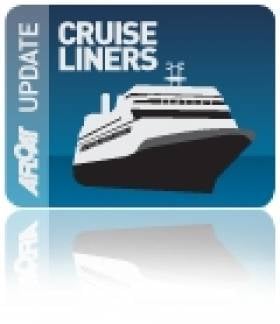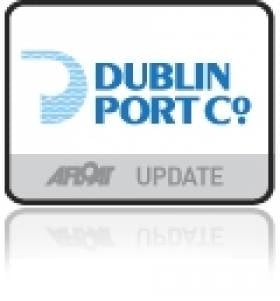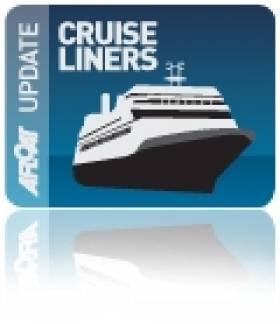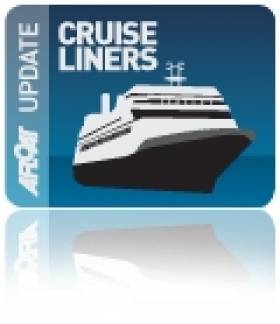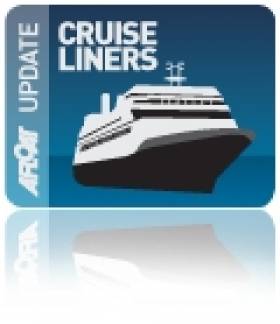Displaying items by tag: Dublin Port news
Dublin Port 'Draft' Masterplan 2011-2040 Goes On View
Prior to the launch of the draft masterplan, Dublin Port Company undertook an eight-week consultation process up to May this year, which involved community briefings and meetings from a wide range of stakeholders including business representatives, associations, state agencies, customers and local community groups. Over 220 responses were received to form the 'draft' which is now ready for the current viewing.
Once supplementary submissions are reviewed, the 'final' Masterplan will be prepared and published in early 2012 and will form a framework for future developments at Dublin Port.
Eamonn O'Reilly, CEO of Dublin Port Company said: "It's clear from the 220 responses received during the first phase of the masterplan consultation process that people care deeply about the important role Dublin Port has to play in the future development of our economy and this city".
He added, "It's important, therefore, that all our stakeholders take this final opportunity to view and input on the masterplan. From Customers, exporters and local residents to public bodies, city planners and tourist organisations, everyone's contribution is necessary to help create a shared vision and lasting legacy for Dublin Port."
To view the masterplan, viewing hours are weekdays starting today and running to Friday, 2nd December 2011 from 9.00hrs-17.00hrs at Dublin Port Company, Port Centre, Alexandra Road, Dublin 1.
Interested parties are invited to make supplementary observations on the draft masterplan in writing no later than Friday, 9th December 2011 to: The Masterplan Consultation, Dublin Port Company, Port Centre, Alexandra Road, Dublin 1. For further information including a PDF downloadable version of the draft masterplan and SEA, click HERE.
Three Masterpieces Set to Make an Impression in Dublin
Arcadia caters for the UK market and she is on a 13-night cruise which so far has included calls to North Shields, Tyneside, Invergordon, Shetland Isles, Glasgow, Belfast and Liverpool. After her call to the capital she heads for Cork and finally to St Peter Port, Guernsey.
Readers may note that the vessel is of the same design as of Cunard Line's Queen Victoria, which also called to Dublin in May and Cork. In fact Arcadia was to be given the regal name but the 2005 Italian built vessel was transferred from Cunard Line to P&O Cruises, which are under control of US-owned cruise giant Carnival Corporation.
Notable external features of the Arcadia are glass-fronted lifts, two pools, one with a skydome and an interior that is brimming with an art collection consisting of over 3,000 works. She has many facilities such as a three-tier palladium theatre, an intimate 30-seater cinema and gymnasium with an ocean view to inspire those exercising at sea. She was constructed in just twenty months by the Fincantieri shipyard, just outside Venice.
Likewise Eurodam has an extensive art collection theme that is based on the Dutch master's 'Golden Age' including "The Nightwatch, Two Minutes Later", a contemporary re-interpretation of Rembrandt's famous painting. In addition there are 17th-century watercolour maps by famed cartographer Johannes Vingboons.
Passengers on the 11-decked Signature-class can also enjoy the Pan-Asian restaurant and lounge surrounded by panoramic views, an explorer's lounge bar, an Italian restaurant adjacent to the lido, jewellery boutique, atrium bar, show lounge and a photographic and imaging-centre.
Last but not least to dock around lunchtime will be the 30,000 tonnes Ocean Princess, operated by Princess Cruises, another subsidiary of the Carnival Corporation. The 680-passenger / 181 m long vessel may be the smallest of tomorrow's callers and within the Princess Cruises fleet, but the former Tahitian Princess, which underwent an extensive dry-docking in Singapore last winter is well equipped with facilities.
She has a cabaret lounge, club restaurant and bar, casino bar, main pool and spa, steakhouse restaurant, panorama buffet, an Italian restaurant and the Tahitian Lounge. To see the work conducted at the dry-dock, you can view a slideshow by clicking HERE and to see the work in a completed state which also applied to her sister Pacific Princess, watch this VIDEO.
- Dublin Port
- port of Cork
- Dublin Bay News
- Princess Cruises
- P&O Cruises
- Cruiseships
- Port of Dublin
- Ports and Shipping News
- Cunard Line
- Dublin Port news
- Holland America Line
- queen victoria
- Fincantieri Shipyard
- Port of Dublin news
- Arcadia
- Eurodam
- Ocean Princess
- Irish cruiseship ports ofcall
- Dutch masters
- Rembrandt
- Onboard Art Collection
- Johannes Vingboons
The need to ensure that Dublin Port and Dublin City are integrated and that the Port "turns its face" to the City, by removing physical barriers to integration and encouraging more people to visit the Port or view the activities taking place in the Port.
Widespread acceptance that Dublin Port is a key part of national strategic infrastructure and plays a key role in the life of the City and the greater Dublin area.
The importance of facilitating international trade in Ireland.
Unanimous agreement that everything possible should be done to encourage and facilitate the increased presence of Cruise Ships in Dublin Port.
General agreement that DPC faces significant challenges in operating and growing the Port in light of the location of the Port alongside sensitive environmental zones.
A common view that DPC should fully exhaust all viable alternatives to meet the operating requirements of the Port before engaging in additional reclamation works.
Widespread recognition that the creation of new port facilities at Bremore or elsewhere was not likely in the medium term given the financial challenges facing such a project in light of current national capacity, the scale of the engineering project involved and current funding.
The process sought views from a wide circle of stakeholders whose views on the operations and future of the port are important. Community briefings attracted over 100 people from Clontarf, East Wall and Ringsend. A conference was attended by 140 key stakeholders, while additional briefings were held with 12 organisations and groups.
Commenting, Mr. Eamonn O'Reilly said: "The objective of growing Dublin Port to allow it to handle 60m tonnes by 2040 is generally regarded as a reasonable basis for long term planning of the port. We are delighted with the response to our consultation process to date and we will make every effort to respond to all inputs we have received.
The Masterplan will help drive our national competitiveness by planning responsibly for an efficient and effective infrastructure to underpin the trading needs of our economy into the future. We are very conscious of the challenge of doing this, while integrating well with the city of Dublin and its citizens and expanding in a responsible and environmentally friendly manner."
Arising from the Consultation Process and the responses to the Issues Paper, there are a number of additional reports and studies that will be considered in the context of finalising the production of the Masterplan and a number of further meetings will be arranged with specific stakeholders.
Up Close and Personal: New Boat Tours of Dublin Port
In addition to cruising this stretch of the River Liffey alongside the 'Docklands' quarter, the tour RIB boat will pass downriver through the East-Link toll bridge where visitors will get closer views of the variety of vessels and calling cruise liners from other ports throughout the world.
There will be five daily tours beginning at 10.00am, 12.00pm, 2.00pm, 4.00pm and 6.00pm.Tickets cost €15.00 for adults, €12.50 for students and the charge for senior citizens and children is €10.00.
In addition Sea Safari operate a 'River Liffey' only tour, a Dublin Bay 'North' and 'South' tours which visit Howth Head, Baily Lighthouse, Ireland's Eye and to Dalkey Island and Killiney Bay, where both bay tours provide a chance to spot local marine wildlife of seals, porpoises and sea birds.
- Rib
- Dublin Port
- Dublin Docklands
- Howth Head
- marine wildlife
- Cruise Liners
- Sea Safari Tours
- Dalkey Island
- Port of Dublin
- River Liffey
- Ports and Shipping News
- EastLink
- EastLink Toll Bridge
- Dublin Port news
- Baily Lighthouse
- Killiney Bay
- Seabirds
- Port of Dublin news
- RIBcraft
- M.V. Cill Airne
- Dublin Port cruise liners
- North Quay Wall Dublin
- Dublin Bay tours
- Ireland's Eye
Loop Head: A Guiding Light for Foynes-Bound Cruise Calls
Her arrival will be followed by P&O Cruises latest addition Adonia on Saturday. With 710 berths the 30,000 tonnes vessel is the smallest of the seven-strong fleet which can accommodate between 1,800 and up to 3,100 passengers as in the case of the Azura. The 115,000 tonnes vessel departed Dublin Port this evening. Her first call to the port was last year (click HERE) and she is the largest cruise ship to call to the capital.
On Tuesday of next week the 9,000 tonnes Spirit of Adventure (cruises) marks the third cruise caller to Foynes. The port is along with five other terminals located throughout the country's largest estuary are operated by the Shannon Foynes Port Company (SFPC).
Incidentally Spirit of Adventure and Azura where two of another trio of cruise ships that visited the Port of Cork on Monday, with Holland America Line's 59,000 tonnes Rotterdam forming the third vessel. This was the first occasion that Cork has handled this number of cruise ships on a single day, bringing 7,000 passengers which set a new record for the port.
- Shannon Estuary
- Shannon Foynes Port Company
- P&O Cruises
- Loop Head
- Cruiseships
- lighthouses
- Dublin Port news
- Holland America Line
- Port of Cork News
- Le Diamant
- Cruiseliners
- Spirit of Adventure
- Shannon Estuary news
- Loop Head Lighthouse visitor centre
- Azura cruise ship
- Spirit of Adventure cruiseship
- Adonia cruiseship
- Rotterdam cruiseship
- Loop Head Lighthouse
- Shannon Estuary and River
- Shannon Estuary and River news
- Lighthouse news
- Irish cruise calls
- Irish ports of call
- Foynes Port
New €1.5m Rail-Spur for Dublin Port
The minister welcomed "the important investment by Dublin Port Company in its rail network. It will further enhance the attractiveness of the port as a destination for rail-based freight. The project represents a commitment on the part of Dublin Port Company and Iarnród Éireann to customers who want to move goods by rail".
The project took six months to complete and the public private partnership involved Dublin Port Company, Iarnród Éireann and the first customer of the new facility, International Warehousing and Transport (IWT).
IWT is a privately owned Irish logistics company, which already operates freight-trains to Ballina that are expected to increase from 4 to 5 trains per week in each direction as a result of this investment. The rail-operator believes that the service will save up to 5.5million road kilometres annually and reduce CO2 emissions by up to 2,750 tonnes.
The Irish Exporters Association also welcomed the development of the IWT freight operation at the new facility, where increased frequency in services will enhance Ireland's contribution to the European Union's modal shift aspirations from road to rail.
The Common User Terminal is also open to other shipping companies. Existing clients using the lo-lo container terminal operated by Burke Shipping Group through its subsidiary Portroe Stevedores are C2C Lines, APL, Coastal Containers, Evergreen, Gracechurch and OOCL . The terminal also has a ro-ro berth facility where CLdN /Cobelfret operate from on routes to Belgium and The Netherlands.
In addition to the Dublin-Ballina service the port exports 400,000 tonnes of lead and zinc concentrate from the freight customers Boliden/Tara Mines with 15 trains per week. The facility at Alexandra Basin Jetty is regularly served by vessels from Arklow Shipping Ltd, where the 2011 newbuild Arklow Field (2,998 tonnes) is currently berthed.
- Dublin Port
- Dublin Port Company
- Arklow Shipping Ltd
- Irish Exporters Association
- Port of Dublin
- Ports and Shipping News
- IEA
- Minister for Transport
- Ocean Pier
- Irish Rail
- Iarnrod Eireann
- Portroe Stevedores
- Dublin Port news
- IWT
- ASL
- Leo Varadkar T.D.
- Port of Dublin news
- Railfreight
- International Warehousing and Transport
- Alexandra Basin East
- Common User Terminal
- Burke Shipping Group
- Clnd Cobelfret
- Boliden
- Tara Mines
- Arklow Field
- Dublin Shipping
- Lead mines
- Zinc mines
- Irish Railways
- Dublin Port railhead
Brand New Marina Calls to Dublin
The cruise started from Copenhagen and toured several ports in Norway from where the vessel continued to Lerwick, Torshavn,Iceland, Portree and her last port of call was Belfast. The vessel had berthed in Dublin's Alexandra Basin and departed this evening bound for Dover.
Following the Marina's departure out of Dublin Bay via the North Burford bouy, was the Marco Polo. The 1965 built vessel operates for Cruise and Maritime Voyages and she proceeded past the South Burford bouy bound for St. Mary's, the capital of the Scilly Isles.
There will be many more cruisecalls such as the ultra luxury six-star Silver Cloud which is due on Sunday. The 16,927 tonnes vessel operated by Italian owned SilverSeas Cruises, has only a capacity for 294 passengers. Following that visit P&O Cruises 115,000 tonnes Azura docks in the capital this day next week to disembark up to 3,500 passengers. To view a full list of cruise callers click HERE.
Largest Vessel Transits Samuel Beckett Swing-Bridge
She remained alongside this berth which is normally used by large commercial ships until the vessel sought a berth much closer to the city-centre. This led to a shift of berths in the evening when the 2003 built vessel headed upriver to the Dublin City Moorings facility at Custom House Quay, but this firstly required transiting through two bridges.
With a beam of 10.6m Fortunate Sun entered through the East-Link toll-lift bridge followed by the Samuel Beckett bridge, the Liffey's newest crossing point which opened in late 2009. The €60m bridge was commissioned by Dublin City Council and designed by the Spanish architect engineer Santiago Calatrava. To read more on the bridge click HERE.
Fortunate Sun is registered in the Caymen Islands and is capable of over 17 knots on a range of 5000 nautical miles. She has a steel hull and an aluminium superstructure and interiors also by Tim Heywood Design. In the early hours of tomorrow morning the vessel built by Oceanfast is to depart through the 5,700 tonnes bridge which was delivered by barge after a five-day voyage from Rotterdam.
There has been previous transits of the bridge notably the annual Dublin Rally organised by the the Inland Waterways Association of Ireland (IWAI). This year's Dublin Rally took place on 1 May when boats travelling on the Royal Canal descended via Croke Park and entered the Liffey at Spencer Dock. This required the Iarnrod Éireann bridge-lift and the water level in Spencer Dock to be lowered so to allow safe clearance under the Sheriff St. bridge.
From there the IWAI flotilla made the short passage downriver to re-enter another inland waterway system at the Grand Canal Dock, marking where the Liffey connects with the city's southern canal. The 2011 Dublin Rally was the first time since 1955 that boats could enter Dublin from the Shannon via the Royal Canal and the first time since 2004 that boats also joined from the Royal Canal.
- powerboats
- motorboats
- inland waterways
- Dublin Port
- Dublin
- Grand Canal
- IWAI
- Royal Canal
- DDDA
- Inland Waterways Association of Ireland
- Dublin City Council
- Spencer Dock
- River Liffey
- Ports and Shipping News
- EastLink Toll Bridge
- Dublin Port news
- Grand Canal Dock
- Dublin Docklands Development Authority
- M.Y. Fortunate Sun
- Tim Heywood Design
- Lifffey
- Dublin City Moorings
- Custom House Dock
- Powerboat news
- Motoryachts
- Sir John Rogerson Quay
- Inland Waterways news
- Dublin Rally
- Ianrod Eireann
- Oceanfast
- Scottish Western Isles
RMR Shipping Increase Irish-West African Sailings
Dublin Port Company has welcomed RMR Shipping's new increased frequency of its service to West Africa, from a monthly to fortnightly service starting next month, writes Jehan Ashmore.
The direct service which began in 2009 using a single vessel from the capital to Nigeria, Ghana with calls to Lagos and Takoradi, is set to gain a second ship as demand for the service rises.
Two 157-trailer capacity ro-ro sisters are to be deployed on the route, they are the 23,000 gross tonnes sisters Celandine and Celestine. The Belgium-flagged pair both built in 2000 will take 18-days to transit between Dublin and Ghana.
The next sailing to Dublin is due on 5 July when the Celandine (PHOTO) is to dock at berth 51a, which is one of three berths located in the ports multi-user ferryport Terminal 1, shared by Irish Ferries, Stena Line and seasonal services of the Isle of Man Steam Packet Company.
Commenting on the development, Eamonn O'Reilly, Chief Executive Dublin Port Company said: "We are delighted with this development. Anything which increases the link between Ireland and emerging economies beyond Europe has got to be good for exports.
He added, "The service to Takoradi complements our involvement with Irish Aid from 2008 to 2010 in delivering an international training programme for ports in emerging countries including Ghana. The TrainForTrade programme was delivered with UNCTAD and we are hopeful of being able to announce a follow-up to the first programme in the coming months.
The development of RMR Shipping on the direct sea freight link was also welcomed by the Irish Exporters Association (IEA) whose chief executive John Whelan commented that exports to Nigeria last year exceeded €200m, the second largest market for Irish goods into Africa.
Spot the ‘Big’ Difference! From Containership to Cruiseship
It may just be another cruiseship visiting Dublin Port today, but the gleaming white painted Costa Marina started her career in complete constrast as a grey-hulled containership, writes Jehan Ashmore.
The cruiseship has some unusual hull design features indicating clues to her origins as the containership Axel Johnson (click PHOTO) notably the pronounced chine bow (horizontal-lines) still clearly visible under her name when launched in 1969 at the Oy Wärtsilä shipyard in Turku, Finland.
She was the leadship of five sisters of over 15,000 tonnes ordered by her Swedish owners, Johnson Line. The next sister completed, Annie Johnson was also converted into a cruiseship and she too serves Costa Cruises as their Costa Allegra.
Axel Johnson measured 174m in length and was fitted with two deck-mounted gantry-cranes to handle containers. Her design even catered for passengers but was limited to just four-persons compared to today near 800 passenger capacity and an increase in tonnage to 25,500. To see how she looks now click PHOTO
Her Scandinavian owners sold the vessel in 1986 though it was not until 1988 that the containership came into the ownership of her current owners Costa Cruises who converted the vessel at the Mariotti Shipyard in Genoa. Two years later the ship emerged as the Costa Marina (to see another click HERE).
She has nine decks which feature restaurants, bars, jacuzzis, pools, gym, treatment rooms, sauna, an outdoor jogging track, theatre, casino, disco and a squok club with PlayStation entertainment. Accommodation comprises for 383 cabins including 8 suites with private balcony and a crew close to 400.
Costa Cruises were founded in 1924 but they are a relative newcomer to Dublin. The vessel departs this evening from Ocean Pier bound for the Icelandic capital of Reykjavik. To view the ship's web-cam click HERE (noting to scroll right down the page).
Costa Marina and indeed larger cruiseships may in the future relocate upriver to berths much closer to the city-centre, should proposals by Dublin City Council take pace. In order to boost tourism numbers a dedicated new cruiseship terminal could be built at a site close to the O2 Arena and East-Link bridge.
The site at North Wall Quay Extension is currently in use by ferry operator P&O (Irish Sea) for their ro-ro route to Liverpool. To read more in a report in yesterday's Irish Times click HERE.



























